HTC One max Review - It's Huge
by Brian Klug on October 28, 2013 10:00 AM EST- Posted in
- Smartphones
- HTC
- Mobile
- One
- Snapdragon 600
- Android 4.3
- One max
The One max joins a small but growing list of phones that include a fingerprint scanner for unlocking the device. I’ll leave the discussion about whether fingerprints are fundamentally usernames or passwords for another day, but fingerprint scanners seem to be in vogue right now for mobile phones. You could make the case that the perceived increase in security that comes with fingerprint scanners is both an enterprise or consumer play, again I’ll leave that philosophical discussion for another day. I remember the Motorola Atrix and its fingerprint scanner being a big deal a while ago, since then we’ve had the iPhone 5s dramatically reintroduce the fingerprint scanner and now the One max follow suit.
The One max fingerprint sensor is a swipe type, meaning there’s some kind of strip sensor inside that you swipe your finger across. Sliding your finger over this strip allows the module to scan a 2D region and extract features that are then used to identify a fingerprint. The One max hides this scanner inside a black square that’s slightly recessed on the back of the device, just beneath the camera. I’m reminded somewhat of the LG G2 and its rear-mounted power and volume buttons which also sit just beneath the rear-facing camera. Perhaps that’s a missed opportunity for LG, which could have also gone with a swipe type sensor in its power button. On the One max anyhow there’s no button, just the sensor. Although the fingerprint sensor is recessed slightly, it’s somewhat difficult to locate with just one’s index finger, something that results in inadvertent smudging of the rear-facing camera cover glass, something that didn’t happen as much with the G2 because there’s a larger lip and easily locatable bump.
The placement of the fingerprint sensor makes sense given that of the power button. As stated earlier for right handed users this means your index finger sits naturally near the sensor if your thumb is on the power button. Since the fingerprint button still requires activation to unlock the One max, you still need to press power to turn it on before you can swipe your finger and finally unlock it. I find myself wishing the fingerprint sensor was itself a button, something like the iPhone 5s, so unlocking could be as simple as pressing and swiping with the same finger. On the iPhone 5s the best activation pattern is pressing the home button and leaving the finger in contact with the button.
Setup requires you to set a passcode, after which a few training swipes trains the sensor for the finger you’ve chosen. Although the animation that plays shows the finger aligned along the long axis of the phone, for greater accuracy I trained the One max with my finger at the angle it would naturally be given my thumb on the power button. The only requirement given the swipe sensor is that the slide motion is straight down and not skewed.
The One max fingerprint sensor allows for up to 3 fingers to be paired, each able to either unlock or have the option of both unlocking and launching an application. I like the idea of fingerprints as shortcuts, something the iPhone 5s implementation lacks, but three fingers seems like a curiously low number given the ten digits humans have to work with. On the other hand, the placement of the button really limits you to middle and index fingers being viable options. In terms of functionality, although Apple doesn’t yet use fingerprints as shortcuts, Apple does use the fingerprint scanner to authenticate iTunes, iBooks, and App Store purchases, something HTC can’t quite do with the One max for Google Play purchases, at least until Google makes an API for it.
I initially trained the fingerprint sensor with my index finger being swiped straight down, and had some issues with unlocks requiring multiple swipes. Doing finger enrollment and training at an angle closer to how I actually swipe it naturally (at an angle) made the accuracy better, but the reality is that unlocking the One max still requires multiple tries more often than not. There isn’t much processing latency after a scan, but I had hoped the One max sensor would be tap and hold rather than swipe given its shape. I’m not clear what suppliers are involved for the sensor, but I’m told the One max also securely stores just the extracted features and not the fingerprint images (which is a no brainer). I haven’t delved much into the infrastructure used to secure the fingerprint features yet either. I’m also not sure whether the One max learns additional parts of the finger which wasn’t part of initial training the same way Apple’s does.
Although I don’t think anyone has totally nailed the fingerprint sensor yet on a device, the One max implementation definitely is further from perfection than Apple’s. Although it does work reasonably well, it still isn’t the transparent kind of convenience that I feel will compel users who ordinarily wouldn’t have to used a passcode to go and use the fingerprint scanner. I’ve continued using the fingerprint scanner on the One max, however.


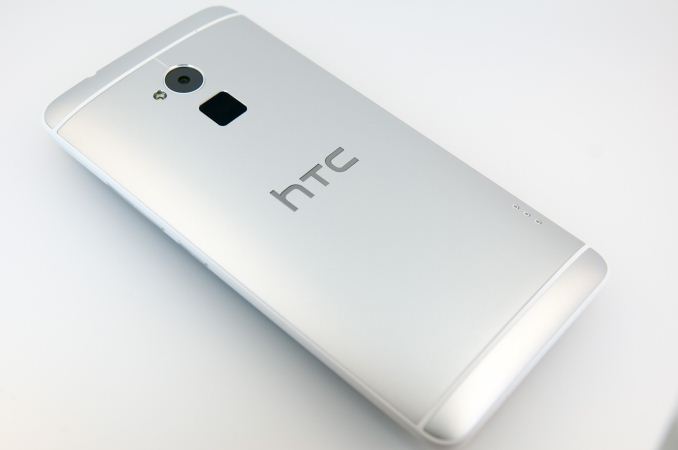
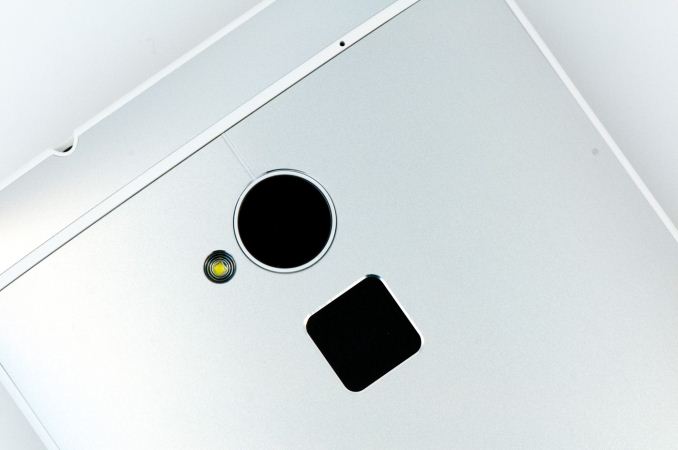
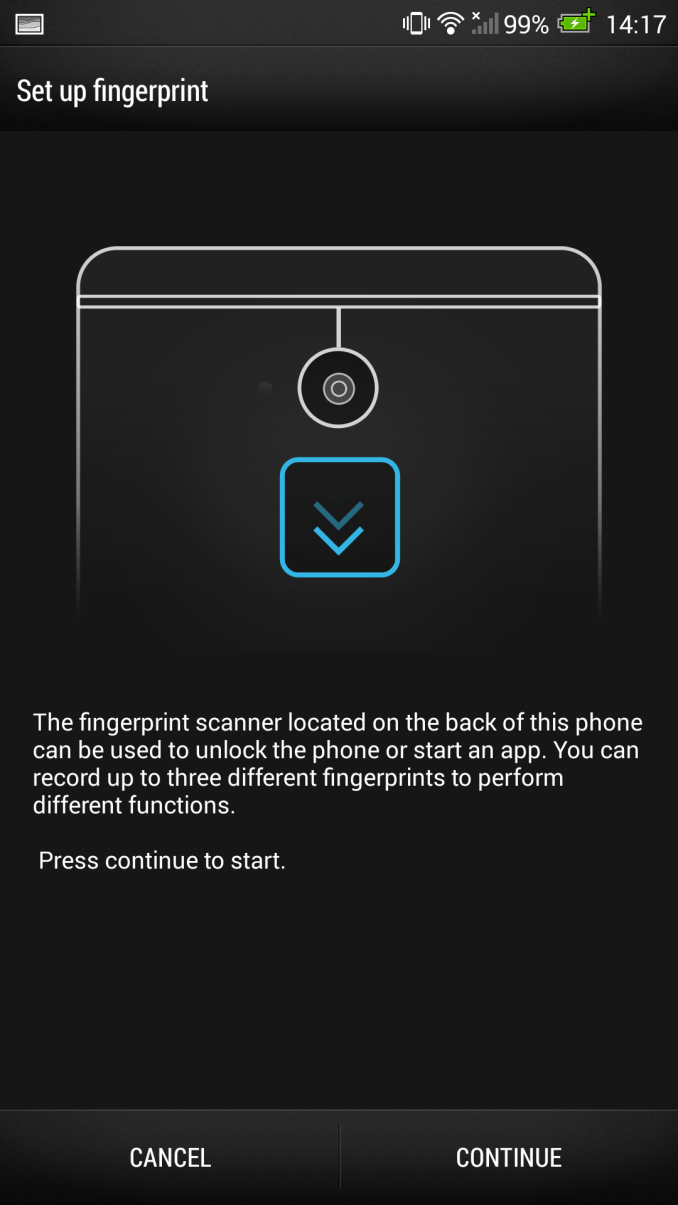
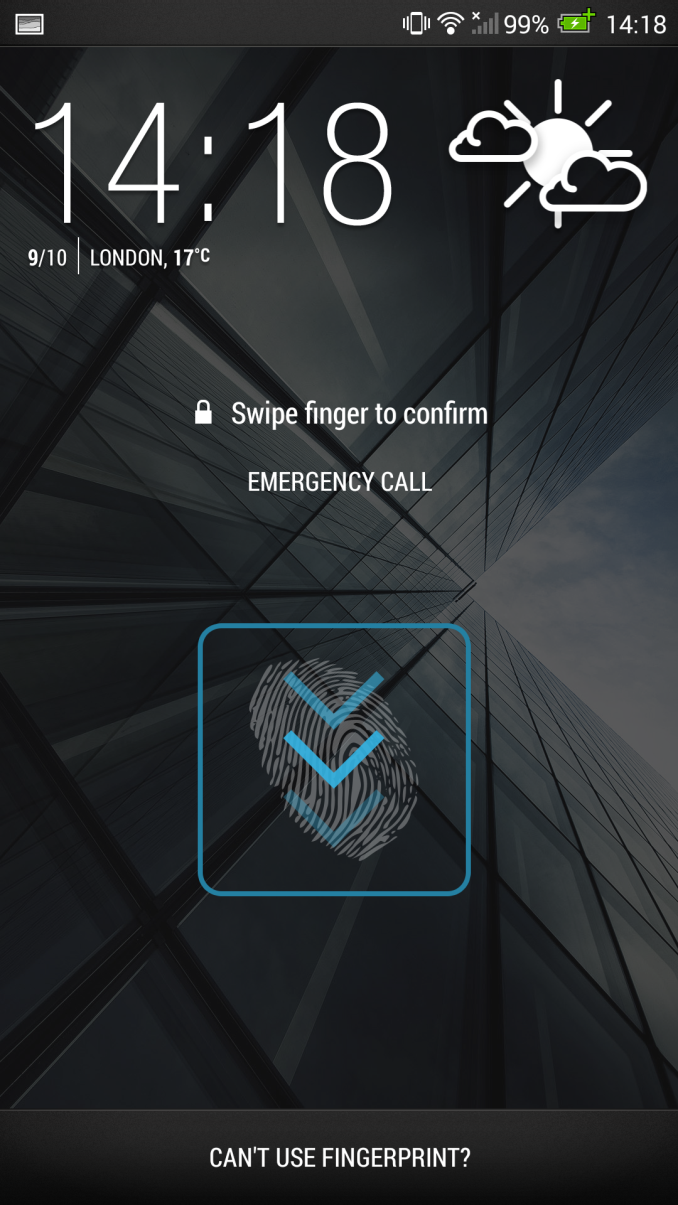

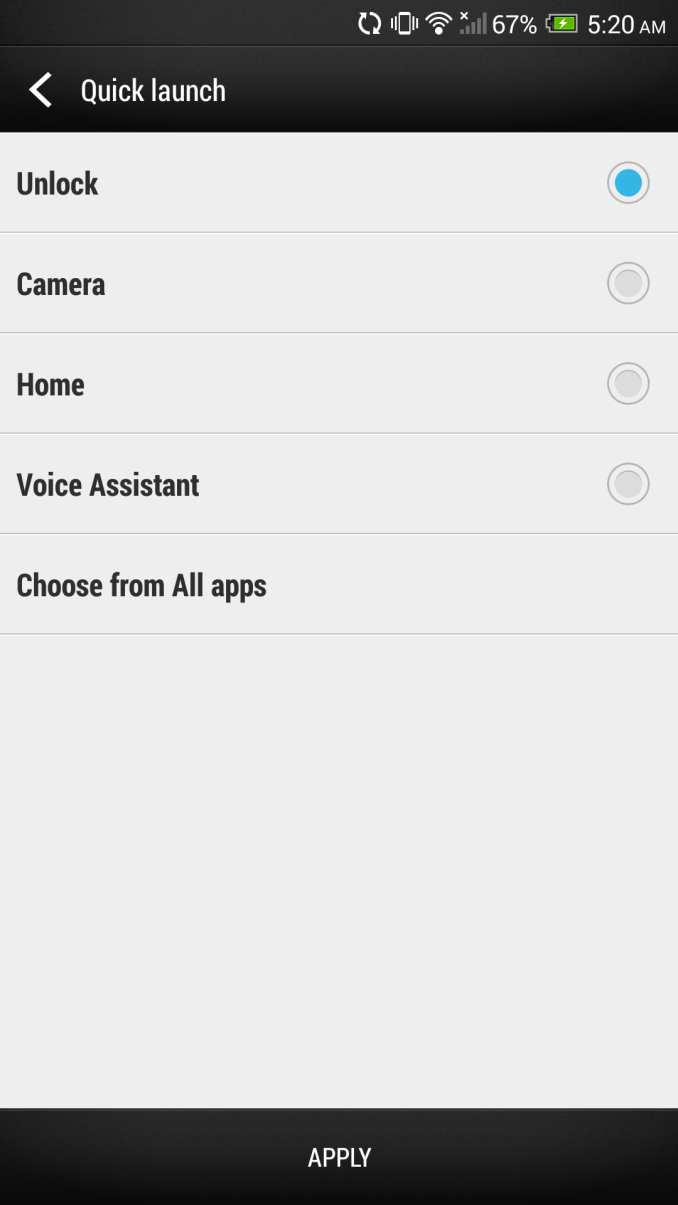








197 Comments
View All Comments
chizow - Tuesday, October 29, 2013 - link
Couldn't have written it better myself, I'll be honest and say I haven't read through an entire one of Brian Klug's reviews but if they were all filled with this kind of distorted reality transposed to the general populous, I probably wasn't missing much.Simply put, microSD opens up uses that base model 16GB phone users could never dream of using for their phones. For example, I recently had 2 large family events during the same weekend, took multiple movies at full 1080p on my SGS4 with a UHS-I microSD and captured around 25GB of footage. Never could I have done this with my 16GB Apple 4S, nor would I even attempted to do it.
And what would the other option be? Pay 2x as much for 16GB more? No thanks, not when I can just move my microSD card from one phone to the next and not get fleeced on extra storage every time I buy a new device, with my own money (seems to be a key point lost upon Brian, anyways).
seapeople - Tuesday, November 5, 2013 - link
So let's see... I'm a budget conscious consumer who is shopping for a smartphone that I'm going to keep for 4 years because I'm too cheap to upgrade sooner. My options are 16GB phone + microSD card for a total four year price of $3600, or a 64GB phone with faster native storage for a total four year price of $3760.Can't you see why it's absolutely ridiculous how you microSD shills freak out over such a pointless little feature? Just buy the overpriced flash storage and forget about it, it's barely a bump in the road for someone who's paying for a smart phone data plan anyway.
Spunjji - Thursday, November 28, 2013 - link
Nice work, that straw man was totally asking for it and boy did you give it to him. You're such a big man.tipoo - Monday, October 28, 2013 - link
I do like the cheating table of shame there, but I also worry that this would just make the cheating more sophisticated, with phones being able to detect apps even with renames and hide their clock speeds etc.FalcomPSX - Monday, October 28, 2013 - link
just how big are phones going to get before people realize how absolute ridiculous it looks holding a tablet sized device up to your ear? Something the size of the original htc one is just about right.AssBall - Monday, October 28, 2013 - link
Its more ridiculous watching someone hold a tiny phone 8 inches from their face so they can see what it says and push the tiny buttons. I'll take a larger phone any day. Easier to use, harder to lose, good battery, nice screen size.MikePCUser - Monday, October 28, 2013 - link
Comparison videos between the One Max and the One on YouTube also show the MICROPHONE is decidedly inferior on the One Max. I wish you had tested that as well!chizow - Monday, October 28, 2013 - link
Brian, while you are certainly entitled to your opinion of every aspect of the smartphone market, I think you need to take a step back and realize not everyone is in your situation and receives free phones for review or a product budget for AT to buy review samples.I think your comments with regard to SD cards in particular are off target, as it is an important feature for many users who do not want to pay exorbitant amounts for miniscule increments of storage. 128GB models if some popular phones like the iPhone 5S literally double the on-contract price vs a 64GB SD card that sells for 50 bucks.
Contrary to what you have said, the fact the One Max's inclusion of an SD slot along with myriad other Android and Windows tabs and phones illustrates SD slots are NOT going the way of the dodo. Hopefully companies do not take your opinions on the matter as fact.
Brian Klug - Monday, October 28, 2013 - link
Please read my above comments about SD cards, the reality is that the demographic that uses them is a lot smaller than you'd think.Also there's no 128 GB iPhone 5S, just 64 GB.
The context everyone is missing is that I would not trade an SD card slot for the removable door and build quality tradeoffs it brings.
-Brian
10101010 - Monday, October 28, 2013 - link
What you present regarding SD cards and build quality tradeoffs is largely a false dichotomy based on your own biases regarding particular aspects of "build quality".Take for example, the Sony Xperia Z Ultra. It's about the same size as the One Max and offers SD card expansion. Many reviewers have positively commented on the build quality of this device, even noted that it offers water and dust resistance. A more insightful reviewer would realize that it isn't the SD card that is responsible the particular issues you have with build quality, it is the fact that the phone wasn't designed well to begin with.
Of course, you would probably still disparage all the purchasers of this device for wanting flexible affordable local storage and find some way to disparage the device for poor build quality anyway. After all, biasing people away from flexible and cheap local storage and towards expensive and easily data-mined in-cloud storage is what your corporate masters want, isn't it?
If we look at your shallow view of "build quality", then it becomes even more obvious that there is a false dichotomy. You don't spend much time balancing how easy it is to repair a device vs. how it is built. You don't balance the fact that many phones with removable back covers have replaceable batteries. Nor do you balance the additional radiation going into someone's head because a phone is made of metal. Essentially, you are looking at a few aspects of something that resonate with your biases and proclaiming some judgment that SD cards are bad for phones and that the people who want SD cards are some sort of small, unimportant, and obnoxious minority.
Even if you continue to push your biases in your "reviews", maybe it's time for a bit more honesty? You can still write a good review if you say "I just don't like SD cards because it's hard for me to manage removable local storage".